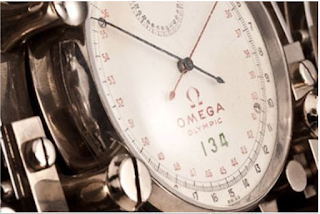The utilization of stopwatch to time Olympic occasions
started at the primary Modern Games in 1896 and finished during the 1960s with
the happening to electronic timekeeping. Contact cushions were speedier than
clocks' thumbs and electric eyes turned out to be more solid than natural eyes.
Regardless of whether it's for attempting to get a free pizza from Domino's or timing laps for your driver at Road America, the powerful mechanical hand clock has demonstrated its value over and over. Indeed, even the respected CBS News telecaster Walter Cronkite wasn't insusceptible to their appeal; that was no unimportant pocket watch he checked toward the finish of every broadcast. It was a stopwatch.
The utilization of stopwatches to time Olympic occasions started at the primary Modern Games in 1896 and finished during the 1960s with the happening to electronic timekeeping. Contact cushions were faster than clocks' thumbs and electric eyes turned out to be more dependable than natural eyes. In all actuality, electronic planning didn't supplant mechanical planning to such an extent as it supplanted human frailty.
In any case, these workhorse clocks that fit so pleasantly close by merit in excess of a passing note. We should investigate some Olympic minutes during the brilliant time of mechanical timekeeping.
In 1916, Heuer envisioned the "Micrograph", the world's first games digital stopwatch precise to 1/100th of a second. Prior to its introduction, the imperative of precision for most arranging instruments was 1/fifth of a second. Finally, Heuer used the dynamic Micrograph to time events for the Olympic Games in Antwerp in 1920, Paris in 1924, and Amsterdam in 1928. Heuer before long contributed timing device to both Summer and Winter games in 1980, yet those electronic timekeepers looked fairly like the mechanical pieces used during the 1920s.
Omega appeared in Los Angeles in 1932. Thirty stopwatches were flowed by one watch pro to deal with 117 events in 14 games tested by 37 nations. Gives off an impression of being a troublesome assignment, clearly Omega was proficient. They've been an improving closeness at essentially every Olympiad since.
In any case, in the event that you think Omega and Heuer have had Olympic arranging quit for the day quite a while, Minerva's dynamic 1/100th of a second stopwatch with split seconds handiness was the clock of choice for the 1936 Winter Games. Moreover, Japanese horological goliath Seiko was the official clock for five Games, including — you got it — the 1964 Tokyo Summer Olympics and the Winter Games in Sapporo in 1972 and Nagano in 1998. All things considered, Seiko is the association responsible for the electronic starting weapon advancement. Regardless, we're talking mechanical hand tickers here, and Seiko's responsibility to that advancement appeared in 1964. In their quivers one could find stopwatches prepared for both 1/5-second and 1/10-second exactness.
As we referenced, the completion of mechanical timekeeping at the Olympics appeared during the 1960s, done in by the growing precision of electronic timekeeping and the creating affirmation of human tentativeness. In any case, that doesn't diminish the Olympic stopwatch as an exceptional individual from the mechanical device watch grouping. A couple of associations made tremendous duties to the claim to fame, and a watch nerd — or an Olympic games fanatic — could accomplish more awful than hoarding a collection of these certain pieces.
Click Stopwatch360 to use it.


Comments
Post a Comment